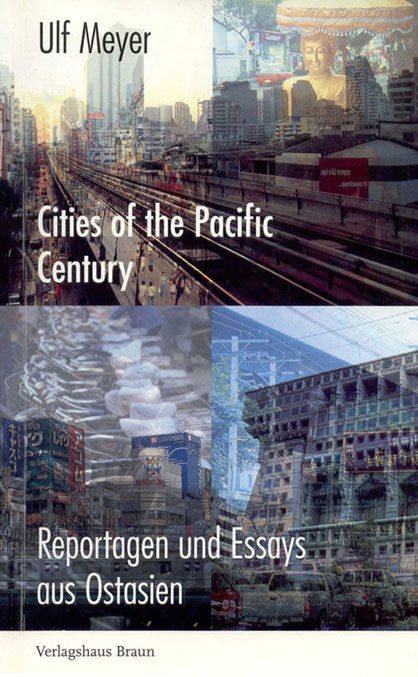Cities of the Pacific Century
Text by Susanne Junker
Berlin, Germany
11.04.08
Olympic Games in China are dominating the headlines just as much as reports about the current spectacular major projects of thel architectural stars.
The impending Olympic Games in China are dominating the headlines just as much as reports about the current spectacular major projects of the international architectural stars in the country. But what is happening behind, below, next to these individual highlights? And how is what has, since Documenta X, been referred to as 'the speed of Shenzen', in other words political power combined with economic might and enormous growth rates, expressing itself with regard to urban planning?
Over a period of 10 years the Berlin architecture critic Ulf Meyer made 15 journeys to the Asian mega-cities of Beijing, Shanghai, Suzhou, Shenzhen, Chongqing, Taipei, Tokyo, Bangkok, Putrajaya and Jakarta. The book of reports and essays on these 10 cities which is presented here may already be 4 years old, but what relevance does time have when, for example, Pudong was not even approved as a special business zone until 1990 and as a result not a single one of the numerous office buildings is older than 19 years?
Ulf Meyer travels by taxi, bike and bus, or goes on foot wherever possible, in spite of all-encompassing motorway networks, and above all he keeps his eyes wide open. His observations result in a thoughtful examination of the role of the city in itself, as a habitat and simultaneously as a nightmare for its inhabitants, its historical development and at the same time the renunciation of this history, the role of the European city as a model and counterpoint, and the city as a tourist destination, money-making machine and symbol of power.
Tokyo, Japan: "You just need to follow the young, Japanese blondes with their platform shoes that flock to the Hachiko Square in Tokyo by the thousands every night. (...) Hachiko Square is the epicentre of this creative, energetic, and vulgar scene and the most important square in Tokyo, a metropolis of some 30 million people. (...) Urban development only began here in 1907 with the construction of a single tram line. After more and more rail companies had built rail lines to Shibuya, their train stations were amalgamated into a single building, a giant department-store/railway-station hybrid with Piranesi-like orgies of staircases and intentionally complex paths from the trains to the merchandise on display at the shopping palaces. Trains stop in the middle of the second, third, and fourth floors of the monster building. The whole quarter around Hachiko Square lies in the hands of the rail companies.“
Suzhou, China: "Whoever walks from the airport terminal in Shanghai to the taxi stand already spots them from a distance: With the skyline of Shanghai in the background, there are huge billboards depicting the silhouette of another city: Suzhou’s New District. (...) Suzhou’s latest new urban district does not even have a proper name. The three-letter acronym "SND“ given to this area is rather reminiscent of an international company and, indeed, the self-image of the new quarter is not far from it. (...) The plans (...) seem to be inspired by the computer game "Sim City“. There is no public transportation available apart from the overcrowded buses. (...) This place is called a 'zone’ in order to avoid referring to it as a new part of the city, because this is an area where buildings are parked, rather than urban spaces planned.“
This means that the book should not only be part of the hand luggage people take on their next trip to Asia – it's also a highly recommended addition to the glossy picture books about the Bird’s Nest or the Water Cube and Co.
Facts
Ulf Meyer
144 Seiten, 128 illustrations,
13.0 x 21.0 cm, soft cover,
Publisher: Verlagshaus Braun, Berlin 2004
Publisher's recommended price: 14.95 EUR
Text German with English translation as appendix
ISBN 13: 978-3-935455-53-4
ISBN 10: 3-935455-53-4





